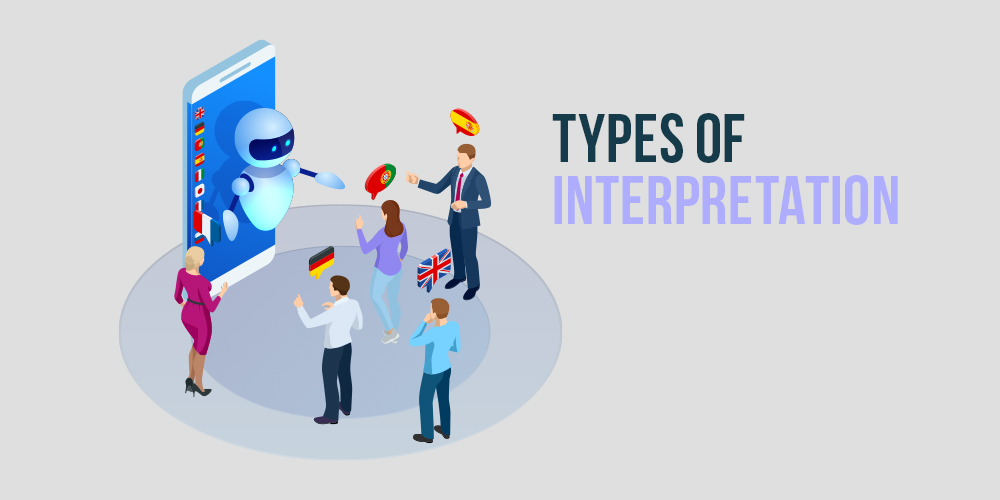
In our increasingly globalized world, the need for seamless communication across languages and cultures has never been greater. Whether it’s a business meeting, a legal proceeding, or a medical consultation, effective communication can make or break the outcome. That’s where interpretation steps in. But what is interpretation exactly, and more importantly, what are the different types of interpretation?
Interpretation is the process of converting spoken or signed language from one language to another in real-time. Unlike translation, which deals with written text, interpretation is immediate and often high-pressure. It requires not only linguistic skills but also quick thinking and cultural sensitivity. Therefore, understanding the types of interpretation can help organizations and individuals choose the right approach for their specific needs. Hence ranging from simultaneous to consecutive, legal to medical, the world of interpretation is vast and varied. In this blog post, we’ll explore the different types of interpretation, how they function, and why they’re essential in today’s interconnected society.
What Is Interpretation?
What is Interpretation? Before diving into the types of interpretation, it’s essential to understand the concept itself. All in all, at its core, interpretation facilitates spoken communication between people who do not share the same language. A language interpreter listens to a message in one language (the source language) and conveys its meaning accurately and naturally in another language (the target language).
However, interpretation is not merely word-for-word translation. Instead, it involves conveying the intent, tone, and cultural nuances of the original message. This makes interpreters crucial in maintaining clarity, trust, and mutual understanding across different linguistic backgrounds.
Why Is Interpretation Important?
You might ask, why is interpretation important in modern society? In any case, the answer lies in the growing need for inclusivity and globalization. Multinational corporations, international courts, immigration offices, hospitals, and educational institutions all depend on interpreters to ensure effective communication.
Without interpreters, people could face misunderstandings, legal complications, or even life-threatening situations in healthcare settings. Therefore, interpreters play a key role in breaking down language barriers and promoting equality and access. For example, a certified translation company in Michigan often provides both interpreting and document translation services for legal firms, hospitals, and government bodies, ensuring that non-English speakers are not left behind.
Looking for interpretation that makes communication effortless?
We connect people with clarity, ensuring every detail is understood. From healthcare to business to law, our interpreters make every conversation effortless.
The Major Types of Interpretation
Overall, there are several types of interpretation, each suited to different scenarios. Thus, understanding these categories can help you choose the right method for your event, meeting, or institution.
1. Simultaneous Interpretation
This is perhaps the most demanding one, out of all the types of interpretation. Here, the interpreter translates the speaker’s message almost at the same time as they are speaking. It is commonly used in international conferences, diplomatic meetings, and United Nations assemblies.
In this form, interpreters often sit in soundproof booths, listening through headphones and speaking into a microphone. The audience then hears the interpretation in their chosen language via headsets.
Simultaneous interpretation is highly efficient but requires intense focus and exceptional language skills. Due to the mental strain, interpreters typically work in pairs and take turns every 20–30 minutes.
2. Consecutive Interpretation
Unlike simultaneous interpretation, consecutive interpretation involves a pause. The speaker talks for a short duration (typically 1–5 minutes), then pauses to allow the interpreter to convey the message. This method is often used in small meetings, press conferences, or courtrooms.
The interpreter usually takes notes using specialized techniques to retain accuracy. Consecutive interpretation allows for more nuanced delivery and is less mentally taxing, making it ideal for settings where absolute precision is critical.
3. Whispered Interpretation (Chuchotage)
This is a variation of simultaneous interpretation but done without equipment. The interpreter sits next to a small audience (usually one or two people) and whispers the translation in real-time.
Whispered interpretation is suitable for environments like business negotiations or tours where only a few people need interpretation. It is discreet and cost-effective but not ideal for large groups due to potential distractions.
4. Relay Interpretation
In multilingual events, it’s sometimes impractical to find interpreters for every language pair. That’s where relay interpretation comes into play. The speaker’s message is first interpreted into a “pivot” language (usually English), then re-interpreted into other target languages.
For instance, if a speech is delivered in Japanese and needs to be interpreted into Swahili and Arabic, the Japanese might first be interpreted into English, and then from English into Swahili and Arabic. While efficient for large-scale events, this method increases the risk of errors and slightly delays the delivery.
5. Liaison Interpretation
Also known as escort interpretation, liaison interpretation involves a two-way dialogue between parties. The interpreter conveys brief exchanges, often sentence by sentence. It’s commonly used in informal settings, such as business meetings, factory tours, or diplomatic visits.
This type requires not only language fluency but also interpersonal skills, as the interpreter may serve as a cultural bridge between parties.
6. Sign Language Interpretation
Often overlooked, sign language interpretation is vital for communicating with the deaf and hard-of-hearing community. These interpreters must be proficient in sign language and capable of conveying not just words, but emotions and tone through gestures and expressions.
This category includes both simultaneous and consecutive interpretation, depending on the setting. Interpreters often work in schools, courtrooms, hospitals, and public events.
Other Specialized Types of Interpreting
Beyond the main methods listed above, there are specialized types of interpreting tailored for specific industries. These include:
Medical Interpreting
Medical interpreters assist in doctor-patient interactions, ensuring that health conditions, treatments, and consent forms are clearly understood. Accuracy is critical, as misunderstandings can have life-or-death consequences.
Legal or Court Interpreting
In legal settings, court interpreters must be familiar with legal jargon and protocols. Their role is vital in ensuring fair trials and due process for non-native speakers.
Business Interpreting
Business interpreters facilitate communication during negotiations, presentations, and trade discussions. They must understand not just the language, but also the business context and etiquette.
Different Kinds of Interpreters
Now that we’ve covered the types of interpretation, it’s helpful to look at the kinds of interpreters. They can be categorized by expertise, certification, and industry.
- Freelance interpreters work independently and take on diverse assignments.
- In-house interpreters are employed full-time by organizations like international companies or hospitals.
- Certified interpreters have passed rigorous exams and training, often required in legal or medical settings.
Hiring a qualified interpreter through a certified translation company in Michigan ensures that you get a professional with verified skills and ethical training.
Choosing the Right Interpretation Service
With so many types of interpretation, how do you choose the right one? It depends on several factors:
- Size of the audience: Simultaneous interpretation works best for large audiences, while consecutive suits smaller groups.
- Setting: Legal and medical settings require specialized interpreters with relevant knowledge.
- Budget: Whispered or liaison interpretation may be more cost-effective for small-scale events.
- Language pairs: Some combinations might require relay interpretation if direct interpreters are unavailable.
Working with experienced interpreting and translation services providers can help you assess your needs and ensure the best match.
Looking for interpretation that makes communication effortless?
We connect people with clarity, ensuring every detail is understood. From healthcare to business to law, our interpreters make every conversation effortless.
Final Thoughts
Understanding the types of interpretation available today can greatly enhance the quality of communication in multilingual settings. Whether you’re a healthcare provider, legal professional, or global business leader, selecting the right interpreting method and interpreter is crucial. In conclusion, interpretation is not a one-size-fits-all solution. The field includes a variety of types of interpretation tailored to different scenarios, from high-level diplomacy to community healthcare. By working with qualified professionals—such as those found at a certified translation company in Michigan—you ensure that language never becomes a barrier to success.
Whether you need assistance for a legal deposition or an international conference, choosing the right kinds of interpreters and services can bridge cultures and build understanding. After all, why is interpretation important? Because communication is the foundation of collaboration, empathy, and progress.

